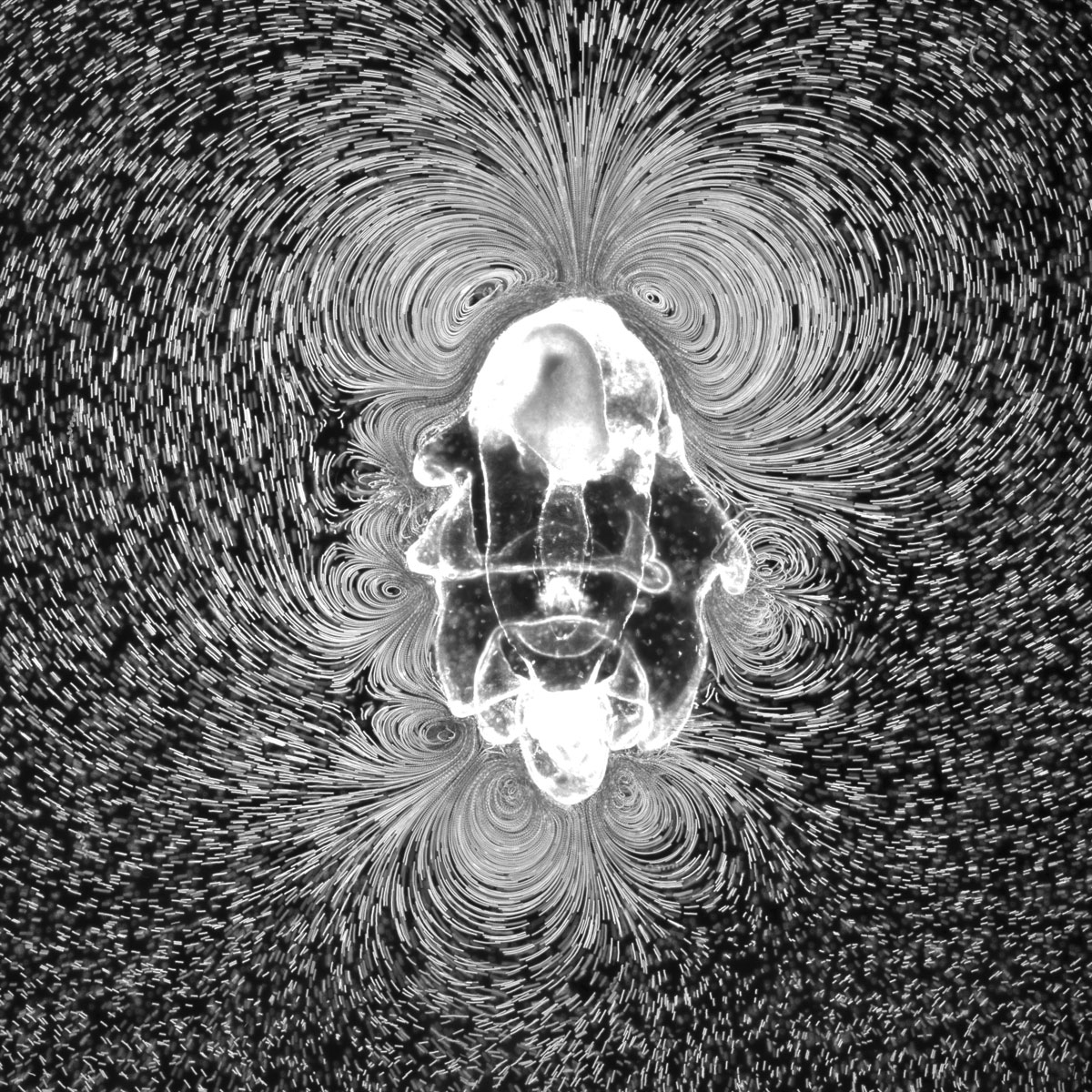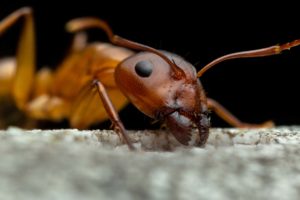In the summer of 2015 three Stanford scientists took a class in embryology at Hopkins Marine Station in Pacific Grove and found themselves transfixed by a bat star larva that moved water around itself in swirling patterns. Using a microscope with video capacity, the scientists could see vortices of water slowly rotating, merging, and splitting apart around the millimeter-long larva.
“We were totally surprised,” says Vivek Prakash, a bioengineering postdoctoral scholar. “They were so beautiful, and we were never expecting to see a really complex pattern of fluid flow around the starfish larvae, so that really got us hooked.”
As the baby starfish waves its cilia—the small hairlike structures covering its body—the water begins to swirl. The linear bands of cilia drape around its body like necklaces; it’s a common structure found across various types of aquatic invertebrate larvae.
But, the researchers wondered, “Why would it be that all of these animals develop the same structure, this sort of way of stirring the water with these cilia?” William Gilpin, an applied physics graduate student, recalls. “By looking at the fluid dynamics, we think that we have an idea.” Gilpin, Prakash, and bioengineering assistant professor Manu Prakash (no relation) detailed a potential evolutionary explanation in the December 2016 issue of Nature Physics.
The first two months of a bat star’s life are spent floating through the ocean, constantly alternating between feeding and moving. And as the researchers found through observation and mathematical modeling, the ciliary bands are an ideal structure for maximizing the larvae’s ability to do both. Algae particles pulled into the vortices swirl toward the larva’s body, and once a particle touches the body, the cilia move it toward the larva’s mouth. Meanwhile, the vortices also propel the tiny larvae through the ocean.
In their study, Gilpin, Prakash, and Prakash observed that the ciliary bands changed the patterns of vortices depending on the density of algae in the water around the larvae. If a larva sensed an abundance of food, then the ciliary bands could create more vortices to trap the food, while in lower-nutrient areas the ciliary bands would decrease the number of vortices for more efficient movement.
The complex dual-purpose action hadn’t been observed before, Gilpin says. “The starfish have found a new trick that we didn’t know about; it was hiding right beneath our noses the entire time. It’s always exciting to see that nature has found a solution that we haven’t.”
After their larval stage, bat stars grow to an average diameter of eight inches and can be found in Bay Area tide pools.




